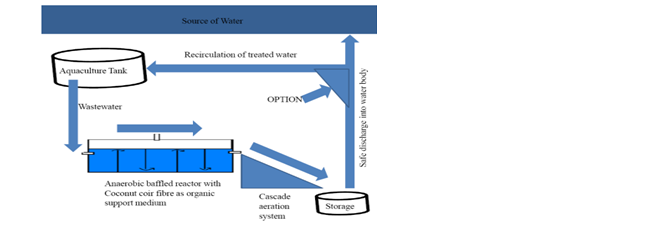
An integrated study on the biological treatment of NO3-N Laden Aquaculture Wastewater
Abstract
Sustainable Aquaculture development in India warrants Environmentally Sustainable Recirculating aquaculture systems which can lower environmental impact and conserve water. However, such technologies are not popular since majority of brackishwater shrimp aquaculture is still practiced as  semi-intensive enterprise. An important challenge in biological aquaculture wastewater treatment in recirculating units is accumulation of nitrate nitrogen of upto 500 mg/L, which is reported to be toxic to fish at levels of 20 mg of NO3 -N/L. Biological denitrification using attached growth is a suitable method; but is in want of cheaper materials to be used as bacterial support medium. The present study evaluated indigenously available coconut coir fibre compared to commercially available synthetic Fujino spirals for denitrification of nitrate laden synthetic aquaculture wastewater in upflow anaerobic packed bed column bioreactors. In the experiments, maximum nitrate removal (99%) was achieved using coconut coir fibre as the bacterial support medium. The performance of coconut coir fibre was comparable to that of Fujino spirals. Physical and biochemical tests results further compounded it’s resilience , structural integrity. PCR analysis confirmed presence of Denitrifying genes. Subsequent application of support medium with coconut coir fibre anaerobic baffled reactor obtained maximum COD removal of 96 % and 95 % . Post aeration using cascading method removed residual ammonia and restored dissolved oxygen. A conceptual model for the integration of anaerobic and aerobic processes in the treatment of nitrate laden aquaculture wastewater has been developed based on the findings.
Keywords
ISSN 2347 – 8853
Indexed in:
 ISSN 2347 – 8853
ISSN 2347 – 8853  Â
Â